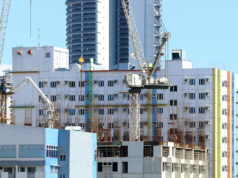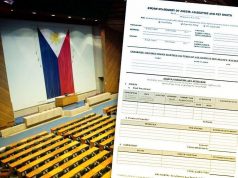Balance of payments swings to deficit

By Elijah Joseph C. Tubayan, Reporter
THE PHILIPPINES’ external payments position swung to a deficit in April from the year-ago surplus, the central bank reported on Friday, saying “outflows… stemmed mainly from payments made by the national government for maturing foreign exchange obligations and foreign exchange operations of the Bangko Sentral ng Pilipinas (BSP)”.
The BSP said in a statement that the country’s balance of payments (BoP) swung to a $270-million deficit in April from the $917-million surplus logged a year ago, and was bigger than March’s $266-million shortfall.
This was the fourth straight month of BoP deficit since December 2017’s $917-million surfeit.
Outflows “were partially offset… by income from the BSP’s investments abroad and net foreign currency deposits of the NG (national government) during the month”, the central bank said.
The balance of payments position for the four-month period stood at a $1.497-billion deficit, nearly double the $78 million recorded in the same months last year.
“The higher cumulative BoP deficit for the first four months of the year may be attributed partly to the widening merchandise trade deficit (based on Philippine Statistics Authority data) for the first quarter of the year that was brought about by the sustained rise in imports to support domestic economic expansion,” the BSP said.
The country’s balance of trade in goods in the first three months of the year saw a $2.61-billion deficit, about a quarter bigger than the $2.10 billion shortfall in last year’s comparable period, as exports growth declined 8.2% while imports inched up 0.1%.
The BSP expects a $1-billion BoP deficit this year, bigger than 2017’s actual $863-million gap.
Sought for comment, economists said that since the wider deficit was driven by the importation of capital goods, it would translate to economic expansion especially as they would be used to build infrastructure.
“This higher BoP deficit is directly related to the widening merchandise trade deficit due to increasing imports that supports economic expansion. The deficit was expected and may continue to widen as the economy churns to a higher growth trajectory as the government embarks on retooling the country’s infrastructure,” Union Bank of the Philippines chief economist Ruben Carlo O. Asuncion said in an e-mail.
“I think that this is not something to be worried about as long as the economy continues to expand and respond to the government’s expansionary spending policy.”
Land Bank of the Philippines market economist Guian Angelo S. Dumalagan said the BoP gap can be expected to persist due to weak exports, leading to further depreciation to the peso.
“For the rest of the year, I believe we would continue to see BoP deficits due to the strong demand for imports and softening exports,” Mr. Dumalagan said in a separate e-mail.
“Higher deficit and expectations of more deficits in the future means that the peso will remain relatively weak, despite the rate hike of the BSP. A widening deficit could also reduce the country’s resilience against external headwinds,” he explained.
“However, I believe that there is a positive side to this, given that higher importation of capital goods could set the stage for stronger economic growth in the future.”
The BSP said that the latest BoP data are “consistent” with the gross international reserves (GIR) of $79.609 trillion as of end-April 2018.
“At this level, the GIR represents more than ample liquidity buffer and is equivalent to 7.8 months’ worth of imports of goods and payments of services and primary income,” the central bank said.
“It is also equivalent to 5.4 times the country’s short-term external debt based on original maturity and 4.0 times based on residual maturity.”
International reserves are composed of gold, the BSP’s assets expressed in foreign currencies, country quotas with the International Monetary Fund, and foreign currency deposits held by government and state-run firms. These stand as buffers against external financial shocks and are considered by credit raters as a source of strength for the local economy.



